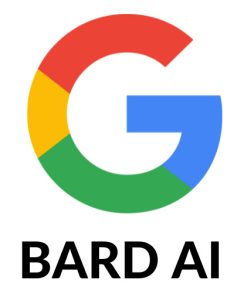
San Jose, CA—An Adobe Firefly update showcases the momentum of the company’s generative artificial intelligence (AI) service. In addition, Adobe announced an integration with Bard by Google and the expansion of the Content Authenticity Initiative (CIA).
In just the first month since Adobe’s Firefly beta launch, creators made it one of the company’s most successful betas ever. It generated more than 70 million images with capabilities such as text-to-image, vector recoloring and text effects.
“The incredible response to our Adobe Firefly beta demonstrates the power and potential of generative AI to inspire more people to create and the strong demand for a creator-centric, commercially viable approach,” said Ely Greenfield, CTO, Digital Media, Adobe.
“We’re empowering millions more people to use Firefly for creative inspiration and design and share standout content with Adobe Express through an integration with Bard by Google.”
Adobe developed Firefly, a family of creative generative AI models, with its AI ethics principles of accountability, responsibility and transparency. It enables Firefly models to be both creator-focused and safe for commercial use.
Moreover, Express is an all-in-one content creation app that makes it fast and easy to design and share social media posts, videos, images, PDFs, flyers and logos.
Adobe Firefly Update
Furthermore, Adobe and Google are partnering to bring Firefly to Bard, Google’s experimental conversational AI service. This will allow the users’ creative journeys to continue further in Adobe Express.
In the coming months, Google will position Firefly as the premier generative AI partner for Bard. It will power and highlight text-to-image capabilities. What’s more, with this integration, users at all skill levels can describe their vision to Bard in their own words to create Firefly-generated images directly in Bard. Subsequently, they can modify the images and use them to create designs via Express.

Adobe and Google are approaching this partnership through a creator-focused lens. Adobe will use the Content Authenticity Initiative’s (CAI) open-source Content Credentials technology to bring transparency to images generated through this integration.
“Generative AI has captured the world’s attention and changed how we think about collaboration and productivity,” said Sissie Hsiao, vice president/GM of Assistant and Bard at Google.
“We’re thrilled to partner with Adobe Firefly, giving our users the power to bring their creative ideas to life, quickly and easily—directly in Bard.”

To date, Firefly is the most differentiated generative AI service that generates commercially viable, professional-quality content. Adobe designed it to embed directly into creators’ workflows both in Adobe’s applications and now in Bard by Google. 
Adobe is training Firefly’s first model on Adobe Stock images, openly licensed content and public domain content with expired copyrights. Moreover, Enterprise businesses can train Firefly with their creative collateral to generate content in their brand language.
The integration of Firefly across Adobe Experience Cloud applications will also allow marketing organizations to use Firefly to accelerate their content supply chain production.
Content Authenticity Initiative Expansion
“At this critical moment in history, as generative AI becomes more powerful and prevalent than ever, people need a way to tell what’s behind the content they’re consuming,” said Dana Rao, general counsel and chief trust officer, Adobe.
“Content Credentials will enable creators to tell their stories authentically, while providing easy-to-use tools to verify how a piece of content was created and modified.”
The CAI, founded by Adobe, has exceeded a significant milestone. It surpassed 1,000 members with new additions to its global coalition. It is a broad mix of tech and media companies, camera manufacturers, creative professionals, researchers, NGOs and others.
With the emergence of generative AI, Content Credentials serves an essential role in ensuring people know whether a piece of content was created by a human, AI-generated or AI-edited. 
“This milestone demonstrates the importance of restoring trust online and incredible momentum behind the Content Authenticity Initiative solution across every vertical and industry,” added Rao.
Content Credentials
The integration of Firefly with Bard by Google will bring Adobe’s ethically developed image creation and editing capabilities to millions of Google users. These users will have the ability to modify the images in Express. They can then use the images to create content with inspiration from Express’s templates, fonts, Stock images and assets.
Because Firefly has the CAI’s Content Credentials on by default, every image created in Bard using Firefly will have transparency.
The CAI’s Content Credentials are a free, open-source tool that serves as a digital “nutrition label.” It shows information such as name, date, the tools used to create an image and edits made to that image.
The data remain associated with the content wherever it is used, published or stored. Thus, it enables proper attribution, helping consumers make informed decisions about digital content.
Adobe created the CAI to help combat the threat of misinformation and ensure proper attribution for creators. In addition to new generative AI technology developers, current CAI members include AFP, the Associated Press, the BBC, Getty Images, Leica, Microsoft, Nikon, Reuters, the Wall Street Journal and more.
The CAI recognizes the enormous opportunities and challenges resulting from AI-generated content. Further, it understands the coalition’s unique role in helping consumers make informed decisions about the content they are consuming.
Between the tremendous momentum in attracting members and the growing adoption of Content Credentials, the CAI is ensuring technological innovations are built on ethical foundations.





